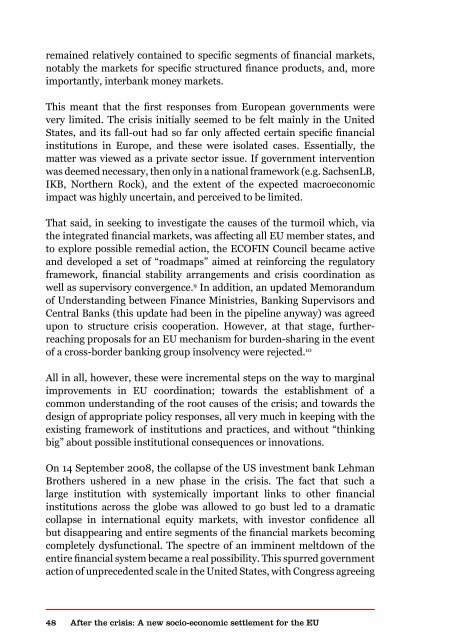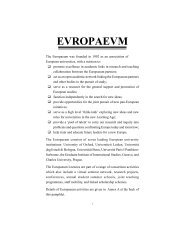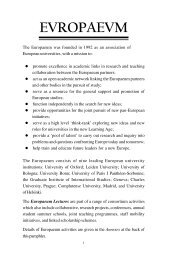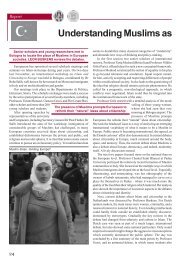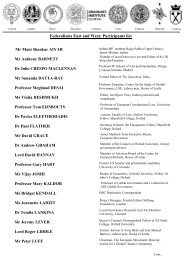Authors Iain Begg | Gabriel Glöckler | Anke Hassel ... - The Europaeum
Authors Iain Begg | Gabriel Glöckler | Anke Hassel ... - The Europaeum
Authors Iain Begg | Gabriel Glöckler | Anke Hassel ... - The Europaeum
You also want an ePaper? Increase the reach of your titles
YUMPU automatically turns print PDFs into web optimized ePapers that Google loves.
emained relatively contained to specific segments of financial markets,<br />
notably the markets for specific structured finance products, and, more<br />
importantly, interbank money markets.<br />
This meant that the first responses from European governments were<br />
very limited. <strong>The</strong> crisis initially seemed to be felt mainly in the United<br />
States, and its fall-out had so far only affected certain specific financial<br />
institutions in Europe, and these were isolated cases. Essentially, the<br />
matter was viewed as a private sector issue. If government intervention<br />
was deemed necessary, then only in a national framework (e.g. SachsenLB,<br />
IKB, Northern Rock), and the extent of the expected macroeconomic<br />
impact was highly uncertain, and perceived to be limited.<br />
That said, in seeking to investigate the causes of the turmoil which, via<br />
the integrated financial markets, was affecting all EU member states, and<br />
to explore possible remedial action, the ECOFIN Council became active<br />
and developed a set of “roadmaps” aimed at reinforcing the regulatory<br />
framework, financial stability arrangements and crisis coordination as<br />
well as supervisory convergence. 9 In addition, an updated Memorandum<br />
of Understanding between Finance Ministries, Banking Supervisors and<br />
Central Banks (this update had been in the pipeline anyway) was agreed<br />
upon to structure crisis cooperation. However, at that stage, furtherreaching<br />
proposals for an EU mechanism for burden-sharing in the event<br />
of a cross-border banking group insolvency were rejected. 10<br />
All in all, however, these were incremental steps on the way to marginal<br />
improvements in EU coordination; towards the establishment of a<br />
common understanding of the root causes of the crisis; and towards the<br />
design of appropriate policy responses, all very much in keeping with the<br />
existing framework of institutions and practices, and without “thinking<br />
big” about possible institutional consequences or innovations.<br />
On 14 September 2008, the collapse of the US investment bank Lehman<br />
Brothers ushered in a new phase in the crisis. <strong>The</strong> fact that such a<br />
large institution with systemically important links to other financial<br />
institutions across the globe was allowed to go bust led to a dramatic<br />
collapse in international equity markets, with investor confidence all<br />
but disappearing and entire segments of the financial markets becoming<br />
completely dysfunctional. <strong>The</strong> spectre of an imminent meltdown of the<br />
entire financial system became a real possibility. This spurred government<br />
action of unprecedented scale in the United States, with Congress agreeing<br />
48<br />
After the crisis: A new socio-economic settlement for the EU


